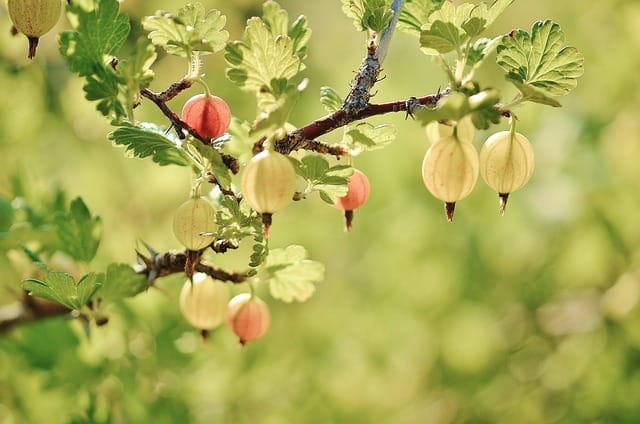How to grow Gooseberries
Gooseberries are delicious and nutritious fruits that can be easily grown in your own backyard

In this article:
- Introduction
- Choosing the Right Variety of Gooseberries
- Climate and Soil Requirements
- Planting Gooseberries
- Watering and Fertilizing
- Pruning and Training
- Pest and Disease Control
- Harvesting and Storing Gooseberries
- Common Issues and Troubleshooting
- Tips and Tricks for Successful Gooseberry Cultivation
- Conclusion
Introduction
Gooseberries are delicious and nutritious fruits that can be easily grown in your own backyard. They are rich in vitamins and antioxidants, making them a great addition to your home garden. In this article, we will guide you through the process of growing gooseberries successfully.
Choosing the Right Variety of Gooseberries
There are several varieties of gooseberries available, each with its own unique flavor and characteristics. Consider factors such as taste preference, fruit size, and disease resistance when selecting the variety that suits your needs best.
Climate and Soil Requirements
Gooseberries thrive in cool temperate climates, with moderate summers and cold winters. They prefer well-drained soil with a pH level between 6.0 and 6.5. Ensure that the planting site receives full or partial sun, as shading can affect fruit production.
Planting Gooseberries
Plant gooseberries in early spring or late fall when the ground is not frozen. Dig a hole twice the size of the root ball and place the plant in the hole, ensuring that the crown remains at ground level. Space the plants 3-4 feet apart in rows that are at least 6-8 feet apart.
Watering and Fertilizing
Gooseberries require regular watering, especially during dry periods. The soil should be kept consistently moist but not waterlogged. Fertilize the plants in early spring with a balanced organic fertilizer, following the manufacturer's instructions.
Pruning and Training
Pruning is essential for maintaining the health and productivity of gooseberry plants. Remove any dead, damaged, or crossing branches in late winter or early spring. Train the main branches to an open-centered shape to improve air circulation and fruiting.
Pest and Disease Control
Common pests that affect gooseberries include aphids, sawflies, and spider mites. Regularly inspect your plants and take necessary action to control infestations. Diseases such as powdery mildew and gooseberry sawfly can also be prevented or managed through proper cultural practices and organic sprays.
Harvesting and Storing Gooseberries
Harvest ripe gooseberries when they have reached their desired color and size. Gently twist the fruit to avoid damaging the plant. Gooseberries can be stored in the refrigerator for up to two weeks. They can also be frozen or used in various delicious recipes.
Common Issues and Troubleshooting
If you encounter issues like poor fruit set, yellowing foliage, or fungal diseases, it is essential to identify the underlying cause and take appropriate measures. Some common issues can be addressed through proper watering, fertilizing, and pest control.
Tips and Tricks for Successful Gooseberry Cultivation
- Mulch around the base of the plants to retain moisture and suppress weed growth.
- Apply a layer of organic compost annually to enrich the soil.
- Protect young plants from extreme weather conditions by providing temporary shade or cover.
- Regularly monitor the plants for any signs of pests or diseases, and take immediate action.
Conclusion
Growing gooseberries can be a rewarding experience, providing you with fresh and tasty fruits. By following the guidelines mentioned in this article, you can successfully cultivate gooseberries in your garden and enjoy their bountiful harvest for years to come.
